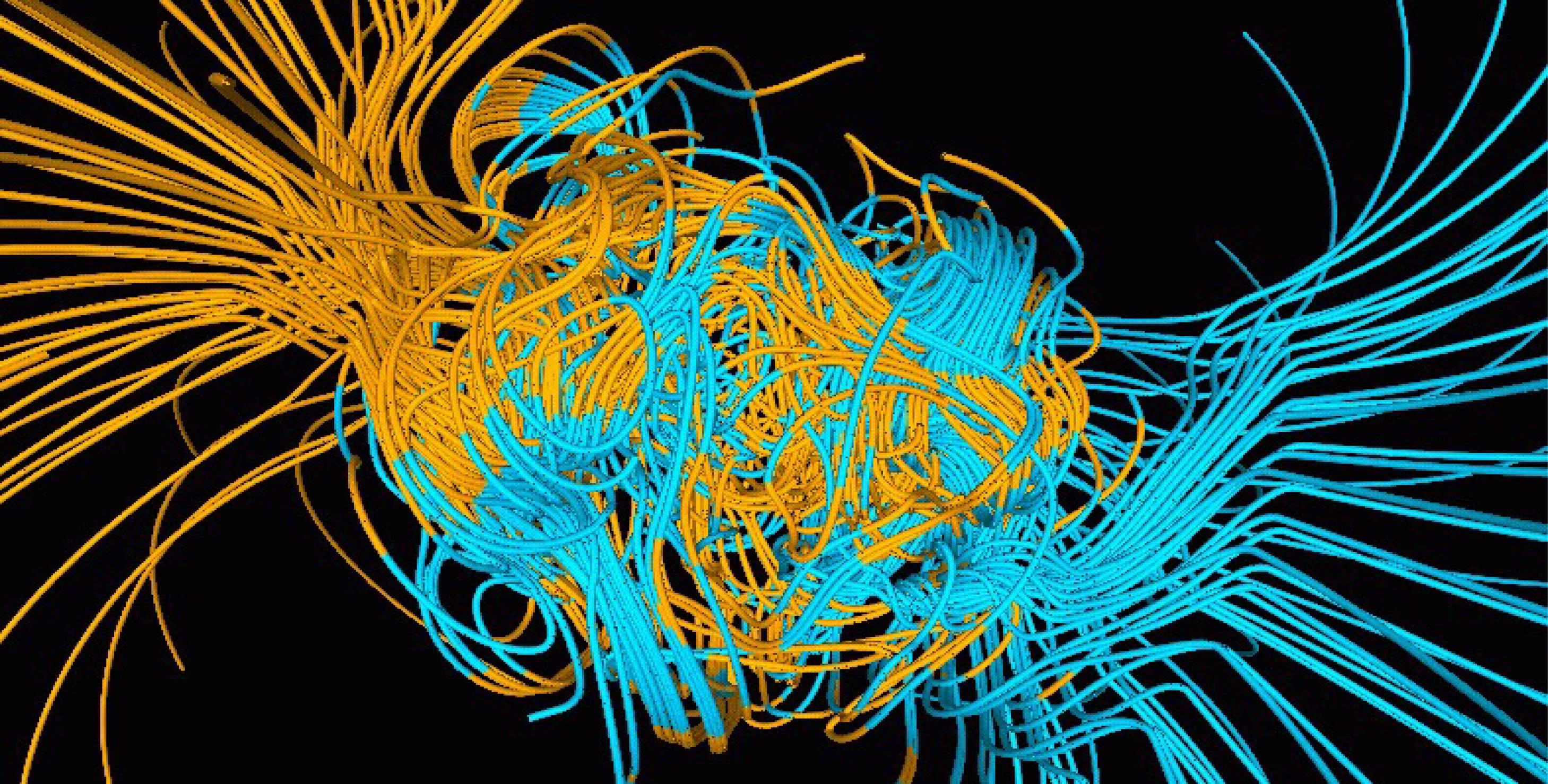
Submitted by Dr C.M. Martin-Jones on Wed, 15/12/2021 - 11:35
Earth’s magnetic field — the invisible shield created by dense liquids churning in Earth’s core — plays a key role in making our planet habitable. Without it, we would be exposed to dangerous levels of radiation and our atmosphere would, quite simply, float away into space.
But how did Earth get its magnetic field, whilst other planets like Venus and Mars currently have almost no measurable fields? Results from a unique experiment that replicates the cooling and solidification of asteroids — remains of so-called planetesimals which formed in our early solar system — will be presented at this year’s American Geophysical Union Fall Meeting. The emerging dataset promises to help us understand how terrestrial bodies get their magnetic fields.
Earth’s magnetic field is powered by the slow freezing of its liquid iron core. As it solidifies, dense crystals sink and the buoyant fluids that remain rise up and stir the liquid outer core, driving convection currents and generating a magnetic field – the geodynamo — that extends out to Earth’s surface further into space.
Whilst Earth’s core is solidifying from its centre outwards, recent findings suggest that smaller terrestrial bodies, including the Moon, Mercury, Mars, Ganymede (a satellite of Jupiter) and planetismals instead solidify from the outside in — with dense iron crystals snowing down into the interior. Known as the ‘iron snow regime’, this process is thought to be key to sustaining planetary magnetic fields, but the data is so far limited to model studies.
To tackle this, PhD student Kathryn Dodds, from the Department of Earth Sciences, has run a series of experiments in tanks of ammonium chloride solution to simulate how planetesimals cool and solidify. In her experiments, the liquid is cooled from above to initiate top-down solidification, whilst crystal formation and the initiation of convection currents are tracked using video analysis.
Snapshots showing the progress of tank experiments: the bright spots forming in the left hand panel are dense ammonium crystals. They become more numerous and start to settle out in the next two stills. Credit: Kathryn Dodds.
The data is still coming in, but her first observations show that top-down crystallization does lead to currents that could make it easier to generate a magnetic field. Kathryn has also captured the initial movements of the crystals as they start to rain down, observing that they are in fact carried downwards in dense, mushy parcels — rather than a more uniform snow as thought.
The upcoming dataset will provide rare empirical data to test models, giving scientists a better handle on the mechanisms driving magnetic fields on planets with different interiors to Earth.
Knowing more about how asteroids develop their magnetic fields might also help in reconstructions of the size and interior of the parent bodies of meteorites, information that is otherwise difficult to infer from the meteorite record. Kathryn published an article on this topic earlier this year, and hopes to mesh numerical and observational approaches through her work.

